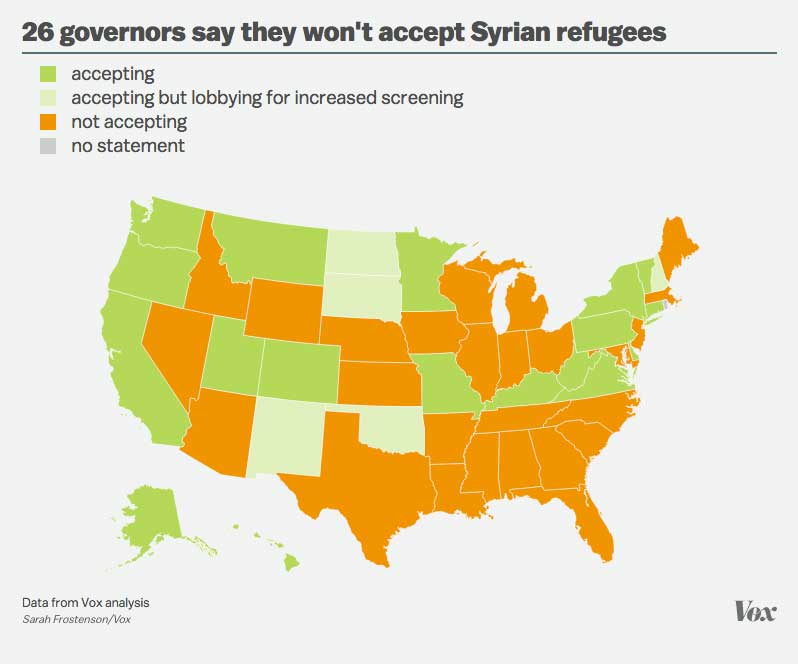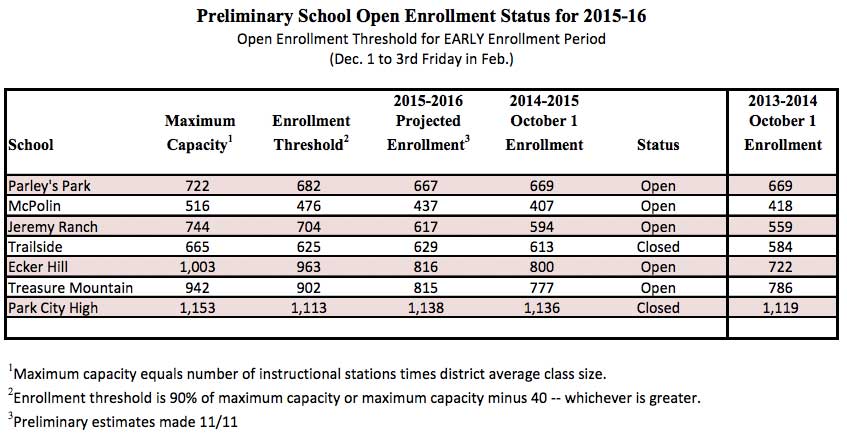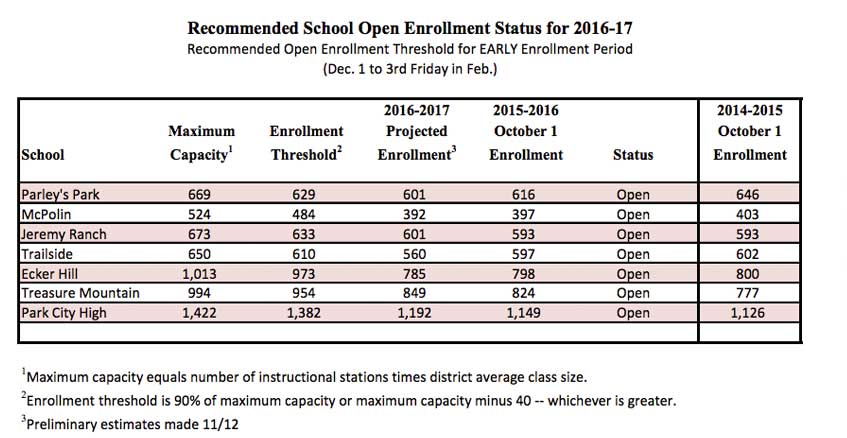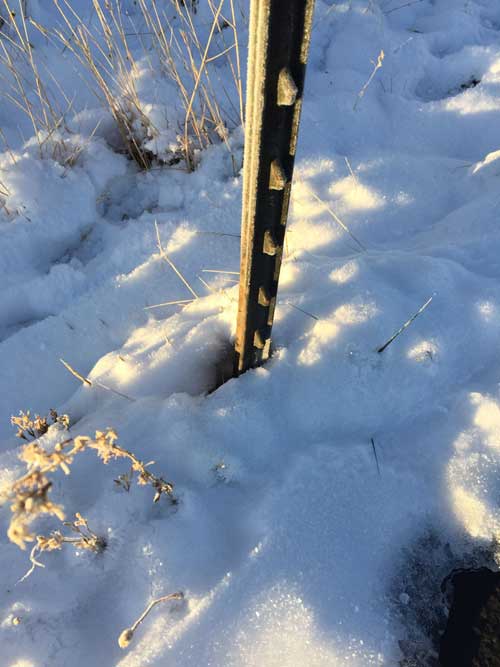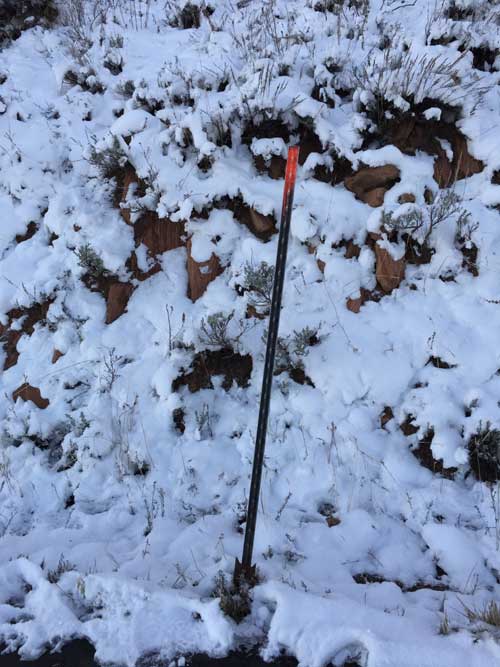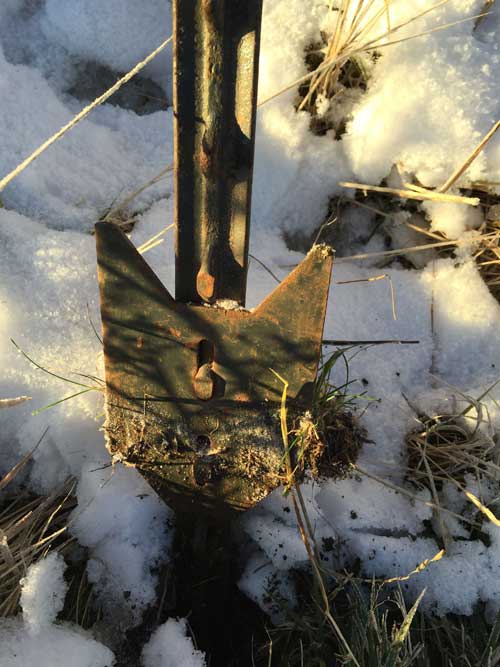Tis the Season to Imagine Yourself and Others on Light Rail
Imagine a light rail service that runs on I-80 from Summit Park towards Park City. It continues to Kimball Junction where there is a transit center. Then it continues in two directions, one heads out on I-80 and then highway 40 by the Home Depot. The other cruises in on 224, past Snyderville and the Canyons resort. Both eventually end up at a transit center in Park City. There would likely be stops every few miles at the Jeremy Ranch Park and Ride, Kimball Junction, Snyderville, the entrance to Canyons, the white barn, PCMR, and Main Street. Coming from the Highway 40 direction, there would be stops by the Bell’s Gas station, Home Depot, the hospital, Park City High School, Bonanza Park, and Main Street.
Sounds great, doesn’t it? Does it? I only ask, because now is the time to start thinking about it. As we enter the winter season, and approach that fateful time of year when Carmageddon is lurking around every corner, our elected officials are going to press forward with plans to “fix” our traffic problems. One of the ideas being considered is light rail and it is up to us citizens to decide whether its something we will really use. One of the knocks against light rail is that everyone says they love it, but once it’s built, many of the people who say they loved it, never use it. That’s because they love the idea for other people, because it would free the roads up for them to drive on with less traffic. The problem is that if not enough people actually use it, it’s a waste of money and effort.
So, would you ride light rail around town instead of drive? Before you answer, let me provide some other facts that may help:
- Most light rail cars look similar. If you’ve seen TRAX in SLC, then you know what they look like. Also, it’s important to keep in mind that most light rail operates off of overhead electric wires. So, when you are visualizing what this may look like, keep that in mind.
- The distance from Summit Park to Kimball Junction is about 5 miles. The distance from Kimball Junction to Main Street is about 6 miles. So a complete run from Summit Park to Main Street is about 11 miles.
- The distance from Kimball Junction to Main street via Highway 40 is about 9 miles. This service would likely need to be built in the next few years, to serve the new Silver Creek Village, Trailside, and Park City Heights areas.
- New light rail systems travel at about 17 miles per hour (without stops in good conditions). So a trip by rail from Kimball Junction to Main Street would take at about 22 minutes of travel time. Factor in times for stops and you are looking at about 25-30 minutes on the train. A car takes about 15 minutes from Kimball Junction to Main Street (when there is not traffic).
- If we look at what is probably a similar project, the Tide Light Rail in Norfolk, Virginia, offers 7.2 miles of service and runs every 10 to 30 minutes depending on time of day. So, we should expect similar waiting times for our trains.
- The Tide Light rail cost $43 million per mile to build in 2007. So, at the same costs, we are looking at about $470 million for the Summit Park to Main Street line. The Highway 40 line (from Kimball Junction to Main street via Highway 40) would be about $387 million. So, a total project would run about $850 million (or more if prices have gone up).
- The Tide light rail costs about $6.2 million to operate every year (or $880,000 per mile). So, our operating costs could be about $17.6 million per year. For reference the Park City budget is about $100 million per year and the Summit County budget is about $60 million. Not that operating costs would come directly from our local budgets, but it would represent about 10-11% of the combined budget to run every year. That said, it is likely bus use would decrease, so some of the increased costs would be countered by decreases in busing.
- The Tide costs $1.75 each way to ride. I’m not sure if Park City would continue with the free service process like they do for buses or whether they would feel the need to charge.
To be fair, these stats are just estimates thrown on a page. When the wheel hits the track it could be different, but this should serve at least as a swag to better understand what rail may look like.
So, what does that all mean? Let’s combine the above information and see what a trip might look like. If you lived in Pinebrook and wanted to go to PCMR, you would likely drive to the Jeremy Ranch park and ride (or something similar) at about 8AM. You’d probably wait about 5-15 minutes for the train, depending on how tightly you wanted to play it. You’d probably have about a 40 minute train ride. You’d probably be dropped off by Fresh Market in Park City at about 8:50. You’d hike the distance to PCMR. It may cost nothing to ride or it could cost about $4 to ride round trip (is the Tide model was used).
So, would that be better than a car? On Carmageddon days and when parking is full at PCMR, I’m sure it would. What about other times? Would it be good enough to use every day? Would you take it to the store to get groceries? Would you ride it to work? Would your high schooler ride it to school? Would you take it to the various concerts around town in the summer. Would you do those things consistently. Most importantly, is your schedule flexible enough that train could always be an option?
If you can envision you and your family actually riding the rail every day, and your friends could envision themselves riding every day, and your co-workers could envision themselves riding every day, then rail may be a good solution for Park City. Typically when rail is embraced by the populace and is actually used it can be a very good thing for a community.
Of course, if you think you may ride it a couple of times a winter, and you think your friends and coworkers might do the same, $850 million is a lot of money.
That is ultimately the decision that we as citizens need to make. Our city, county, and state are going to start running with solutions soon. Sometimes they don’t stop to consider whether the brilliant idea that they have come up with will actually be used. So, I would encourage you to think a little bit about rail this winter season. Imagine yourself taking it to the slopes. Imagine taking it to work. Imagine driving to the Park and Ride and waiting for it. Imagine speeding past that traffic jam you are sitting in.
Then when your government asks “if they build it, will you come?”… you can give them an honest answer.
Will I See You At The New Bus Transit Center Planned for Kimball Junction?
Summit County has been working on a new transportation center that will be behind the library (Richens building) in Kimball Junction. I believe the county and Park City hope this $3 million+ effort will enable buses to run between Kimball Junction and Park City more quickly. At the 60,000 foot level I suppose providing a dedicated location for buses to pick up people makes sense. However, I was talking with a friend who still couldn’t wrap her head around the benefits. She kept saying, “Will it be as fast as a car? Will it be as fast as a car? Will it be as fast as a car?”
The truth is that if they want locals to use it, the trip from one’s house in their car, to a park and ride, to get on a bus, to the transit center in KJ, to their final destination had better be as fast as a car. As our English teachers know, when writing, a comma indicates a pause, and that’s the problem here. It’s hard to fathom in the next 5 years (with or without a transit center) that people will generally get to their destinations as fast as they would in car. Every pause in my sentence above means a pause for the commuter. Sure, on a random Saturday during Sundance, it may be true that a bus is faster (if dedicated bus lanes are developed) than a car… but not generally.
If our citizens don’t make public transport part of their routine, it will never catch on. That’s why I worry that the KJ Transit Center will just become a $3 million boondoggle. Sure, a couple million of that money is provided by federal funds…but it’s still our money.
So, will I see you at the new bus transit center? Probably not… because I won’t be there.
Utah Never Ceases to Amaze Me
If you’ve been following the refugee crisis in Syria, you’re likely aware that the war there is causing a humanitarian crisis. Many people are fleeing that crisis and have gone to Europe. The U.S. has said that it will accept 10,000 refugees in the near future. However, not everyone is happy with that decision. Some people feel that these refugees will at best be a drain on our social welfare system and at worst may be sleeper cells for the Islamist State (ISIS) terrorist group. Yet, some people feel that as a compassionate society, built on the backs of immigrants, we need to accept this responsibility.
Over the past few weeks many state governors (now 26+ Governors) have said they will not accept Syria refugees. I was trying to confirm my suspicions that Utah would of course be on that list. Just listening to an interview with Representative Jason Chafetz of Utah would likely lead most people to that conclusion.
However, low and behold, we seem to be on the compassionate side of history on this one. How often can you say we are aligned with California, Oregon, Washington state, and Vermont? Utah never ceases to amaze me. The nuance here is incredible.
The Role of the Contrarian on Our Government Boards
Back in high school there was a kid that wore the same T-shirt almost every day. It said, “QUESTION AUTHORITY!” Let’s just say that “the authority” didn’t like that shirt much and I recall him spending more than a few hours with the Assistant Principal because of it.
Yet, I think that kid had a point. As I was writing the article this morning on the Park City School board needing to regain the community’s trust, I wondered what could be done in the future to get better numbers regarding capacity. In the article I said that going forward the public needed to question everything. That sounds good in an article, but in practice, the citizen rarely has as much information as the person sitting on a government board. In practice, if citizens have to question everything, it’s going to be miserable for everyone involved. Isn’t there someone that could both have most of the information but is also responsible for vetting ideas?
Of course, they are already sitting on our city councils, school boards, county councils, etc. They just need to both have the confidence that asking a lot of questions is fine and be given the “freedom” from the rest of the board that being critical is OK. A great example is outgoing County Council Member Dave Ure. Mr Ure was/is the only Republican on the County Council. So, by default he was given the leeway to look at things a bit differently. Would Mr Ure spend hours belaboring points? No. What he would do is have a couple of critical points that he would bring up that would be original and contrary to what other people were saying in a discussion. For example, when he was was one of the two County Council members to vote against continuing as part of the Mountain Accord, he questioned whether the environment would be better off because of the program. He said that the Mountain Accord was supposed to be about the environment and he felt our watersheds would be worse off because of the Mountain Accord. He found a way to question the prevailing thought, and he did it in a constructive way.
We can contrast that with the Park City School Board where there was a year without a dissenting vote. Would the school bond process have been stronger, and may it have even passed, if there was someone on the board that questioned almost everything about it? For sure. The parts that were found to be weakest would have been fixed by the board. If those discussions would have been held out in the open, would the public have felt that the plan had been drug through the ringer and gained more confidence because of it? Likely.
I’m not advocating for the person who beats the dead horse, who continually asks dumb questions, and wastes time. I’m advocating for the person who may say, “How did you calculate those enrollment numbers? Can you explain that again, I don’t get it? Do they represent real capacity? It doesn’t sound like our schools are going to be full? Does this plan still make sense if we have negative growth and our schools aren’t at capacity? Is there another way to solve this?”
I know that some people think that any dissention shows weakness, but my experience from watching other councils and boards is that the public gets comfort from knowing that conflicting views are being presented and understanding why either those conflicting views are strong enough to stop a process or why the process was strong enough to overcome the negatives.
The County Council is going to have a harder time because Dave Ure isn’t going to be sitting next to them asking the tough questions. Luckily on that board there are a few contrarians that raise their hands on various issues. So, they’ll likely be fine.
I hope other individuals on other boards and councils around Park City have the confidence and wherewithal to play the part of contrarian now and then. Then in November, we the voting public need to remember there is value in those who see the world a little differently. A little contrarian questioning authority now and then can be a good thing.
School Board Still Needs to Work on Regaining the Community’s Trust
In the wake of the school bond defeat in early November, some of the school board members have done an admirable job meeting with the public to understand why people were against the bond. This is a very encouraging sign that hopefully the relationship between the board and the public won’t be adversarial going forward.
Yet, every once in a while something pops up and still makes me shake my head. If you recall, one of the chief school board arguments for needing the bond was because our schools were at capacity. Board members and district personnel often presented this chart to the public to demonstrate capacity:
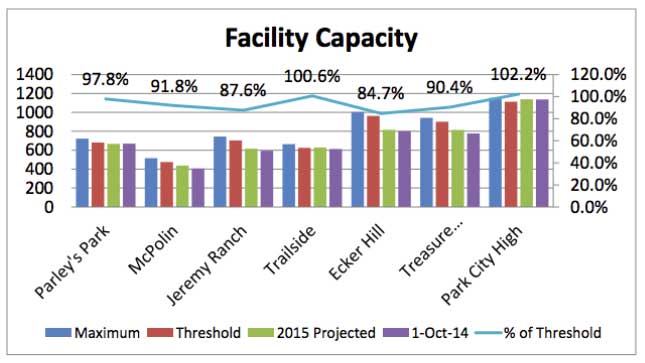
I believe this chart was generally driven by open enrollment number calculated by the school district. Here are the Open Enrollment numbers for 2015-2016:
The high school and Trailside were closed, which means out of district students weren’t generally eligible to enroll at those schools. Keep in mind that the argument of “full schools” was being made up until election day. A few days after the election, the 2015-2016 open enrollment numbers were released:
You may now notice that the high school’s capacity has increased by 23%. You may notice that Parley’s Park’s maximum capacity increased by 8%. You’ll also see that capacity went down at some of the schools. The issue is that a few weeks ago we were being sold that our schools were full. Today we find that, at least per this estimate, that our schools aren’t going to be full.
I’m not arguing that there is some grand conspiracy to inflate and deflate numbers. After all, these numbers are driven by state of Utah formulas. According to School District representatives, changes to capacity at the high school are influenced by renovations that are occurring there. Capacity at our elementary schools are influenced the reading program being brought back into the classrooms (and out of dedicated rooms). So, there is a method to the madness.
Unfortunately, we as voters were told by the district that the schools were full. However, we weren’t told that other crucial piece of information before the election… that in about 10 days they wouldn’t be “full” anymore. School board member Julie Eihausen, during a recent school board meeting on the topic, said what I’m sure many people were thinking. She said, “I’m trying to wrap my head around how we went from 5 of 7 schools at capacity to having none.” The answer from the district Business Administrator, Todd Hauber, was that there were additional instructional spaces now and that the average class sizes had changed.
Yet, for me it’s still a matter of trust. Wasn’t the fact that our schools weren’t going to be full known before the election? If they weren’t going to be full and the district knew it, why wasn’t this told to the public? It’s like your child telling you their school day was good, but leaving out that crucial part about getting detention. Going forward, there’s a lack of trust that now will require extra vigilance.
It’s the same here. When the school district goes for their next bond (likely in 2016) and says anything about their enrollment numbers, how do we know we can trust it? While before we took them at their word, now someone will need to stand up and ask: “That high school capacity number what’s it based on? When was that calculation done? What’s changed since that number was created? Will anything else be changing that’s driving these numbers? Are these capacity numbers what a lay person would consider real capacity? When was your last projection for student numbers? How has that changed since then…etc…etc…etc…”
I suppose it’s not just these numbers that should be carefully vetted by the public. Any estimates done on timelines, construction costs, or needs likely should be carefully analyzed. For instance, I think most people believe that Treasure Mountain Junior High should be torn down. I didn’t start with that opinion, but I probably agree now. However, my agreement is largely based on the fact that there were 3 studies done that showed the costs required to maintain the building were in the $20 million range (almost as much as a new school). Yet, now I want to look at those studies. I want those to be passed by someone in our community with the knowledge to confirm that THE REQUIRED REPAIRS will cost almost as much as new school, so we might as well spend our money wisely. Perhaps the studies were all done in the right way. Perhaps, the costs estimates were only for the things that we HAD to have. Perhaps the studies’ findings were black and white and there could be no other argument other than to tear down the school.
But perhaps they weren’t.
That’s the problem with trust. Once it’s questioned, you start looking at everything (whether there is something there or not). As they say, fool me once — shame on you…fool me twice — shame on me.
It’s a great thing that the school board is working with the public to understand the pieces of the bond that the public doesn’t like. Yet, as the district gears up for the next bond, things need to be different the next time. Fair or not, the school district was already living in the shadow of cost overruns for the last renovations done to the high school. They were living in the shadow of running out of money in some of their funds, thus causing taxes to be raised. Now they are living under the shadow of how they used and presented capacity numbers.
At some point, that shadow’s going to be so dark, it’s going to be really hard to find their way out.
Enjoy this Winter Because the Next Couple May Not Be So Good
It looks like we have a great chance of having a big snow fall this year, if you believe in the effects of the El Nino. The phrase El Nino means, “an irregularly occurring and complex series of climatic changes affecting the equatorial Pacific region and beyond every few years, characterized by the appearance of unusually warm, nutrient-poor water off northern Peru and Ecuador, typically in late December.” To most people in the Western U.S. it means that we have a good chance of a lot of snow this winter.
As of now, the El Nino effect in the Pacific is the strongest it has ever been. Temperatures are 3 degrees Celsius higher than normal in the ocean. The previous record was in November 1997, with temperatures being 2.8 degrees Celsius higher than normal. In that 1997-1998 ski year Alta had about 600 inches of snow, which wouldn’t be described as ming blowing, but it was above average.
Yet what is important is what happened in the years after. In 1998-1999 Alta had 470 inches, which is below average. In 1999-2000 Alta had 500 inches, again below normal. In 2000-2001 Alta had 470 inches of snow. By 2001-2002, Alta was back over 500 inches. It seems that what often follows a rapid rise in ocean temperatures (El Nino) is a rapid decrease in ocean temperatures (La Nina). That is shown in this chart:
The truth is that an El Nino isn’t going to guarantee us a blow out winter. However, if you believe in El Nino, should probably believe in what comes after… And that doesn’t look good.
So, the Park Rag’s advice is to live this winter like there’s no tomorrow. Of course, there will be a tomorrow. It just may be four years away.
PSA: Beware Your Pet’s Paws as the Snow Starts to Fly
Looks like it’s a PSA Friday…
One of the changes I’ve noticed this year is the increase in number of trail markers alongside trails around Park City. My assumption is that Basin Rec has added markers so that paved trails can be plowed more effectively for winter use. It’s a great idea.
However, it appears to that they often aren’t pushing the markers down into the ground far enough. This leaves two points that stick out of the ground. Right now you will be able to see them and avoid them, however, once snow lightly covers the markers they will be hidden. The problem is if your pet steps on the snow above the point, and their foot sinks down, they will likely slice open their paw.
These points don’t seem to be sharp enough to go through a snow boot, so it’s likely that people aren’t at too much risk. However, as the snow comes, and you are out on the trails, you probably want to keep your pets away from these trail markers (just in case).
PSA: Be Aware of Your Shipping Options This Holiday Season
A friend contacted us yesterday with a warning: understand your shipping options or be prepared to be ripped off. It seems she was trying to ship children’s clothes that no longer fit across the country to a relative. She took her box to the post office in Kimball Junction and told the worker that she needed to ship the box and didn’t really care how long it took. The post office worker replied that given the box’s size, priority shipping was the only option. Two points of clarification are needed. First, priority means 2-3 days shipping to most locations. Second, she said this was not a “huge” box; in fact she’d received a shipment from Amazon in it the day before.
The price to ship the box across 4 states via priority mail was almost $37. At that price, she balked and was ready to walk out. She asked, “isn’t there another option?”. The worker finally replied that it could go Standard Post, but that would be via “ground shipping”, and cost $22. My friend replied that she had initially said that time didn’t matter, so of course she was OK saving 50% if it took a bit longer. The worker replied: OK.
In visiting with her, she felt she was being lied to in order for the post office to make an extra buck — something she didn’t expect from the post office. She said it was almost like someone had been encouraging them to up-sell in order to increase their revenues.
So the moral of the story is (as with most things) … do your own research. If you really can wait 7-10 days for a package to arrive make sure you are prepared to demand that level of service. If you can wait and don’t demand it, you may be paying more than you need to.
The Fight For Our Moose
If you’ve lived in the area for even a short period, there is likely one wild animal you’ve seen roaming our hills. The majestic moose. These giant creatures, for the most part, only cause harm to our trees. Due to their size and the fact that they are indeed wild animals, they do occasionally hurt people and their canine companions, but that is a rare event. Unfortunately, these animals are coming under attack from an unlikely source. Us.
It seems that some residents across the area have started calling Utah’s Department of Wildlife Resources (DWR), because they are fearful of what the animals might do to their children, property, or animals. The DWR then often shows up and “transplants” the moose to another area. The resident goes on blissfully unaware and is generally happy that the moose has been “relocated to “greener pastures.” What they don’t realize is that they are issuing a death sentence for the poor animal.
According to the local wildlife preservation group, Save People Save Wildlife, of the 320 moose that have been transplanted within Utah, 280 of them have died, in at least part part, due to their relocation. That is a survival rate of only 12.5%, or put another way, 87% of transplanted moose don’t make it. A number of factors could contribute to this outcome; however a Utah Department of Natural Resources document says that they don’t have a definitive answer of why transplants don’t work here. Some people speculate that since moose live most of their lives in a 10 mile radius, being transplanted out of an area causes too much trauma.
While the near-certain-death of transplanted moose is obviously the largest concern, we also have to consider what transplanting moose will mean for the character of the Park City area. If the statistic about moose living their lives in a ten mile radius is valid at all, when a moose is moved from the Park City area, that moose is not coming back. That moose is not having calves. At some point the population will dwindle, the moose will be gone, and we will be missing a very special part of our community.
Many residents of Jeremy Ranch, an area that has seen many moose relocated this year, are taking matters into their own hands. On local message boards they are imploring people to not share where and when they see moose. Instead they text their immediate neighbors to give them a heads up that a moose is in area, so they can ensure the safety of their children and pets. Members of the community are also saying that the Department of Wildlife Resources may be violating Utah State Code by not following specific measures required by law when transplanting big game. They are approaching the Executive Director of the DWR to ensure they are aware of actions being taken by their employees and to share the public’s concerns.
While moose can be dangerous, especially in the fall and when the mothers have young calves, most of us have learned how co-exist with them without problems. After all, they were here first. And as I often tell my 3 year old after we see a moose… “We are pretty darn lucky. There aren’t too many people that get to see a moose as often as we do.”
I believe most of us view ourselves as stewards of this great area we live in. We take pride in it. We enjoy the wildlife. We appreciate that we aren’t living in Sandy. I think sometimes we just forget that we also owe this land something in return. In this case, we owe it to the moose, to find a way to continue living together. We need to ensure that this is a place that those majestic animals can continue to call their own. If we lose them, this place won’t quite seem like home anymore.
Below is a ABC 4 segment on the issue…
h/t to Walter for suggesting this as a topic
The School Board Needs a Reboot (not a script rewrite). They Need to Pull It Apart and Put it Back Together.
When a TV series or movie is being resurrected from the dead like Battlestar Galactica or Dallas, there are generally two options. You can start it fresh with new ideas and out of the box thinking or you can simply tinker with the script. The cheap way out is the latter option, but the more successful path is usually to rethink the concept. From reading a recent Park Record article on the school board’s response to their bond defeat, it seems they may be only tinkering with the script.
The school board has stated it wants to understand why its $56 million bond proposal was defeated. According to board member Phil Kaplan, “The voters sent a message, and what that message is, isn’t clear.”
What’s clear is that the stunning defeat of the bond has left the board off balance.
The school board’s answer to trying to understand “the why” appears to be a voter survey. The problem with a survey is that they are notoriously hard to get right. First, the questions have to be crafted by professionals, in an unbiased way. Second, the survey has to be distributed in a representative way. Third, it’s not a quick process. I look at the “state of the county” survey that Summit County sends out to residents every couple of years. If I recall correctly, it is crafted by a university professor who has experience in asking the right questions in order to get valid results. Second it is mailed out to a couple thousand Summit County residents that have been deemed representative. Third, the process takes months and costs thousands of dollars.
If the school board decides to go down the survey route but doesn’t follow a similar process to the county, they are going to be using the same strategies that led them their disastrous bond outcome. If they make up the questions themselves, they will be subject to their own biases. If surveys aren’t distributed representatively, the data won’t be valid. If they demand an answer tomorrow, the answer they get will be wrong.
The other issue with a survey is that they will get lots of data points but probably miss the forest for the trees. One of the unexpected benefits of doing something like the Park Rag, is that I have learned to take criticism and hopefully become a better person because of it. I’ve been called an idiot. I’ve been laughed at. I’ve had my ideas torn part. People call some of my articles half baked. People say I don’t understand. People correct me all the time…. and I’ve learned to love the commentary and grow from it. Ultimately, it makes a better product. That is the same lesson that the school board needs to learn. Humility.
If I were the school board, and I decided to ask a survey on why the bond failed, I would include (among other questions) the following:
- On a scale of 1 to 10, how much do you trust the school board?
- If we engage in a $50 million bond effort to rebuild schools, do you trust the school board to spend your tax dollars wisely? Yes or No.
- In 2015 bond election, do you think the school board solicited enough public input? Yes or No.
Only through asking questions that can lead to harsh realities do we typically understand how we are truly perceived. Only from truly understanding how we are perceived, can we begin to lead.
What would I recommend that the school board do?
Begin by going on a listening tour. Talk to the people you hate right now. Be more like Tip O’neil and Ronald Reagan than like John Boehner and Barack Obama. Understand why the Citizens for Better Education opposed your viewpoints (and truly listen this time). Talk to the teachers and see why many of them voted against you. Hold town halls where you let people talk in an open ended format. Sit there, listen, and take it. Be tablarasa. Become better because of it.
My fear is that the school board seems to hold a view that they are undoubtedly right on all accounts and anyone who opposes them just doesn’t understand. In many ways listening to the school board feels like I am listening to Rush Limbaugh. When school board member Phil Kaplan says, “Does anybody not believe Park City is going to keep growing?,” trying to explain why we need the board’s plan… I say “Actually enrollment dropped in the schools this year by 0.5%. A lot of Park City’s growth is from second home owners who don’t have kids. Most parents of school aged children can’t afford a $800,000 house. Why do you conflate population growth with enrollment growth?”
As stated before I would like the school board to begin by talking to those who opposed them in order to get historical context for why their ideas failed.I would then like to see our community (including the school board) agree on two or three core issues we would like to solve. After that, town hall discussions, with no preconceived notions, should be held where people could talk about solving those issues. I would then like the outcome of those town hall meetings to drive options. I would like those options then presented back to the community where further discussions took place. Then I would like the school board to ultimately weigh all the information and decide on a course of action.
The Park City School Board should be more a judge of ideas than advocates.
Instead, what we had was the school board Master Planning Committee, made up of school board members, school administrator, teachers, school district staff, and two members of the public, talk for months in an echo chamber before the public was even engaged. Then when the public was engaged, it was handled like a Choose Your Own Adventure book with the predetermined path highlighted.
We have a great opportunity ahead of us. We are in a community that both values education and generally has the means to achieve it. We have well educated and experienced people everywhere, from our local business persons, to our civil servants, to those retired, to the lifty who would rather be reading Voltaire. We just need to take advantage of that natural resource.
I truly hope the school board will take another step back, scrap the survey idea, take a few more weeks off to clear their heads, meet with those opposed to the bond over coffee and/or beer, and start afresh with the community.
I really hope they find it in their hearts to pull it apart and put it back together.

